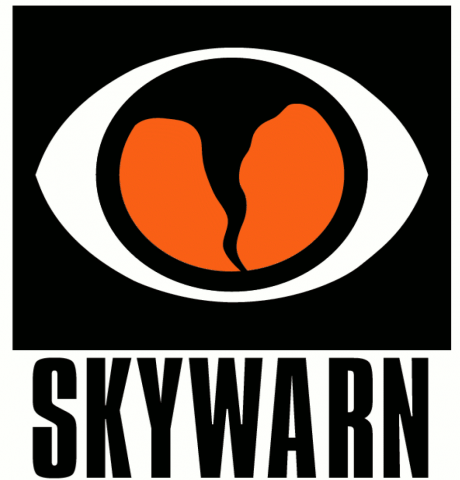
A clipper storm will move across the Great Lakes through this weekend with periods of light snow, gusty winds, and lake effect snow bands which could make for hazardous travel at times. A frigid airmass will spread eastward behind this storm into the Midwest and Eastern U.S. through the weekend. Read More >

Overview:
Skywarn Weather Spotters are critical to the mission of the National Weather Service, which is to protect lives and property by issuing watches, warnings and advisories. The NWS has a lot of highly sophisticated equipment such as satellites and radars, but these tools do not replace the very important ground truth that weather spotters provide. Weather warnings are issued based on these reports, and can save lives and property of those living downstream of a spotter report.
In northeast Montana, there are approximately 1200 weather observers in the 12 counties and one reservation that NWS Glasgow serves.
Training:
The Skywarn Spotter courses are generally held in April and May in various locations around the region. A training schedule is posted on the website each spring. You can find that page at this link.
There is an official online Skywarn training course that you can take if you are unable to attend a class in person. You can take both of the modules and submit your certificates to the NWS Glasgow office to be included in the northeast Montana Skywarn program. The course is available here.
Once the online course is complete, you can email your certificates to Scott Rozanski or mail them to NWS Glasgow, attn. Scott Rozanski, 92 Airport Road, Glasgow MT 59230.
Making Reports:
Weather spotters are asked to report hazardous weather conditions through various methods including an 800 phone number they are given during Skywarn Spotter training. Other methods include email, our Facebook page and twitter reports.
The general public is welcome to report hazardous weather to the NWS Glasgow office at 406-228-4042 or post photos and reports on our Facebook page.
Reports can also be sent to our X (formerlyTwitter) account using @NWSGlasgow and #mtwx (for Montana only reports) or #wxreport (this goes into a nationwide collective of weather reports).
Are you interested in reporting precipitation on a regular basis? Join the CoCoRaHS (Community Collaborative Rain, Hail and Snow) network.
What to report:
Weather Spotters are asked to report the following hazardous weather conditions in northeast Montana as soon as possible:
1. Tornadoes, funnel clouds, waterspouts
2. Hail of any size (see hail size chart below)
3. Winds sustained at 40 mph or higher and any gusts 55 mph or higher
(see wind estimation guidelines chart below)
4. Snowfall, Total Snow Depth, Freezing Rain that is accumulating
5. Significant damage from weather
6. River Flooding, Flash Flooding, Small Creek Flooding, Ice Jams
Spotter safety is our #1 priority with our weather spotter program. We do not ask our weather spotters to chase storms in their area. Rather we ask that they report from their location, but only if it is safe to do so.
If you are not currently a weather spotter, but would like to be one, contact the NWS Glasgow via email or phone (406) 228-4042.
Resources:
NWS Weather Spotters Guidebook
NWS Skywarn Website
National Skywarn Programs
Hail Size Reporting Chart:
Note: Because they come in so many sizes, please do not report hail size as marbles.
|
Comparable Item |
Size in Inches |
|---|---|
|
BB |
< 1/4” |
|
Pea |
1/4" |
|
Dime |
7/10” |
|
Penny |
3/4" |
|
Nickel |
7/8” |
|
Quarter |
1” |
|
Half Dollar |
1 ¼” |
|
Walnut |
1 ½” |
|
Golf Ball |
1 ¾” |
|
Hen Egg |
2” |
|
Tennis Ball |
2 ½” |
|
Baseball |
2 ¾” |
|
Tea Cup |
3” |
|
Softball |
4” |
|
Grapefruit |
4 ½” |
Guidelines for estimating wind speeds
|
Speed (mph) |
Effects |
|---|---|
|
25-31 |
Large branches in motion |
|
32-38 |
Whole tree in motion |
|
39-54 |
Twigs break off trees, wind impedes walking |
|
55-72 |
Damage to TV antennas, large branches break off trees |
|
73-112 |
Peels surfaces off roofs, windows broken, trailer homes overturned |
|
113 + |
Roofs blown from houses, weak buildings and trailer homes destroyed, large trees uprooted, train cars blown off tracks |